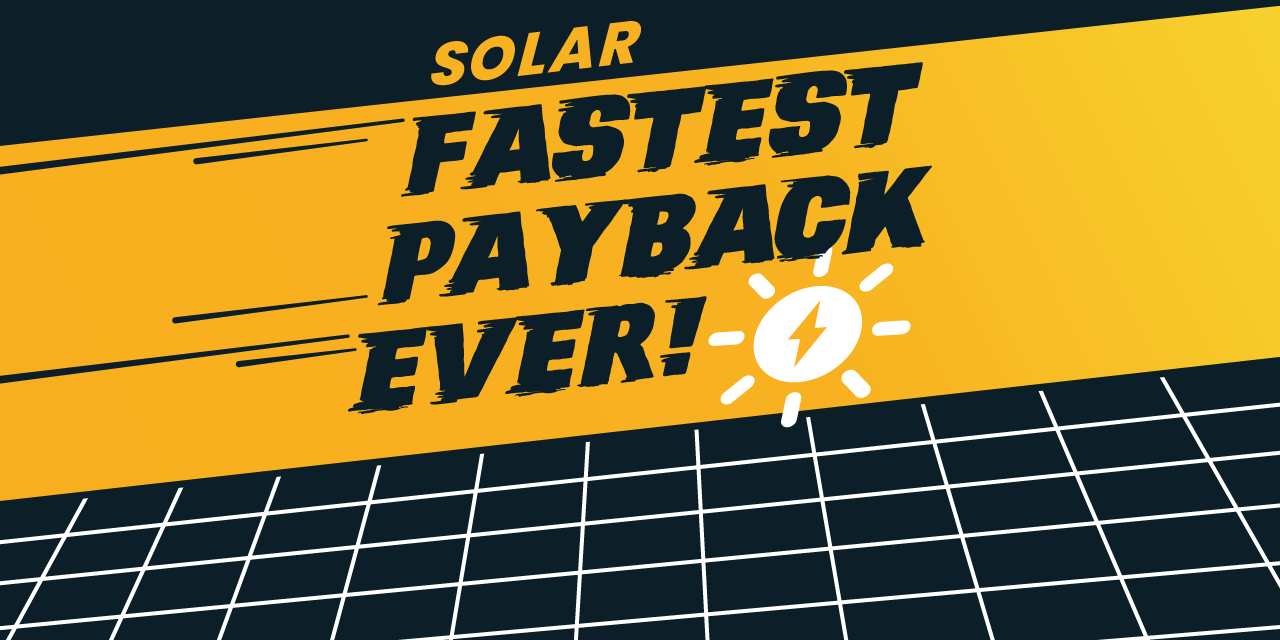Is the Payback for Solar and Battery Shorter Than you think?
The payback period for solar and battery installation is 7 years for typical homes. With the panels warranted for up to 25 years and the battery at least 10, it means years of free electricity!
This is the quickest payback period we’ve ever seen. What’s happened?
There are two drivers: Installation costs falling significantly and electricity costs rising.
The cost of a solar and battery installation has fallen every year since 2010, apart from a one-off bump in 2022 caused by the war in Ukraine. Installation costs today are the cheapest they've ever been with the prices of batteries in particular falling quickly.
Installation costs may have fallen but electricity prices have not. They've doubled since the end of 2021. Every unit of solar energy you use today saves you over 27p. On top of this, the amount of money a solar house can get paid for electricity it exports to the grid has risen. Both of these increase the savings due to solar and battery.
Cheaper install + bigger bill savings = quicker payback.
It sounds simple, next we'll go into the detail.
Get on the Right Tariff
Electricity is expensive to produce during weekday evenings. Millions of people arrive home, turn on their lights and cook dinner. To supply this surge in demand, the grid turns on expensive, dirty, gas power stations.
But what if it didn’t have to?
With a home battery you can cover your peak use with stored energy from your battery. In fact, with a big enough battery you could sell energy to the grid at peak times too.
By doing this you’re doing the grid a huge favour and you should be rewarded for this. But to be rewarded you must be on the right tariff. You’re after a tariff that charges you more at peak times (because you have a battery you don’t need the grid at peak times), less at off-peak times, and also pays you handsomely for exporting during the peak. These tariffs now exist.
Are Solar Panels Right for You?
Whether you're curious about the benefits of solar energy, want to understand the installation process, or are eager to learn about the latest innovations in the solar industry, we've got you covered. Our newsletter is packed with expert insights, helpful tips, and answers to all your burning questions about solar power.
How Do the Savings Add Up?
Let's look at an example.
We’ll look at a home with 4500 kWh annual usage. Each year, our example household uses 1500 kWh between 4pm and 7pm (the peak period) and 3000 kWh in off-peak periods. Don’t worry if you use more or less, we’ve created a calculator to try with your own usage.
What are the electricity costs of this home without solar and battery? On a standard tariff, electricity costs the same regardless of when it’s consumed. A home with 4500 kWh annual usage on a Price Cap Tariff pays 27p per kWh or £1216 plus standing charge per year.
That’s over £100/month straight to an energy supplier.
How Much Would You Save With Solar and Battery?
Well, with the Intelligent Octopus Flux tariff you’d save £1,178. It’s such a large saving that your total bill for the year would be less than £50! A 7-year payback on a £7700 solar and battery installation!
These savings are higher than they used to be. How come?
Intelligent Octopus Flux charges 29.97p/kWh for importing between 4pm and 7pm, but also pays you 29.97p/kWh for exporting during this peak period. For the rest of the day the import and export costs are both 22.48p/kWh.
The big change is export prices. They’re double or even triple the export rate on other tariffs. This really boosts the savings.
In our example, we assume a 12-panel, 5.16 kW solar array that generates 4600 kWh through the year, and a 5.8 kWh battery. Just taking that 4600 kWh generated and selling it at the cheaper rate of 22.48p/kWh generates £1034 of savings. But of course with the battery we can do more.
Of the electricity generated, 4320 kWh is generated off-peak. Either self-consuming or exporting that energy saves £971.
Peak time generation is 276 kWh, adding another £83 of savings. The final savings come from shifting 1862 kWh of electricity from cheap off-peak periods to peak via the battery. This saves £150.
There’s a bit of rounding based on how much electricity the home itself uses off-peak vs peak to get to the overall savings. And of course you can save even more by shifting consumption from the peak into off-peak. But overall it’s a massive saving.
Can I Get Personalised Estimates?
Yes! How much you save depends on how much solar energy you generate, how big your battery is, and how much electricity you use in the peak and off-peak periods. We’ve created a calculator you can use to get a personalised saving here.
Key Assumptions
The biggest assumption we'd highlight is the tariffs we use. We've seen in the last few years how hard it is to predict the future price of energy. You need to be aware that if energy costs were to fall your savings would fall too. Conversely, if prices rise then having solar and battery protects you from the full impact.
Do I Need a Specific Battery?
At the moment Intelligent Octopus Flux only works with GivEnergy batteries. If you don’t have a supported battery, fear not. You could move to the Octopus Flux tariff and still make substantial savings. We estimate the savings would be around £150/year less, but that’s still a payback period of less than 8 years.
• • •
Subscribe to our solar newsletter for expert guidance on all things solar power. If you want to learn more about the installation process, costs, savings and more - we’ve got you covered!









